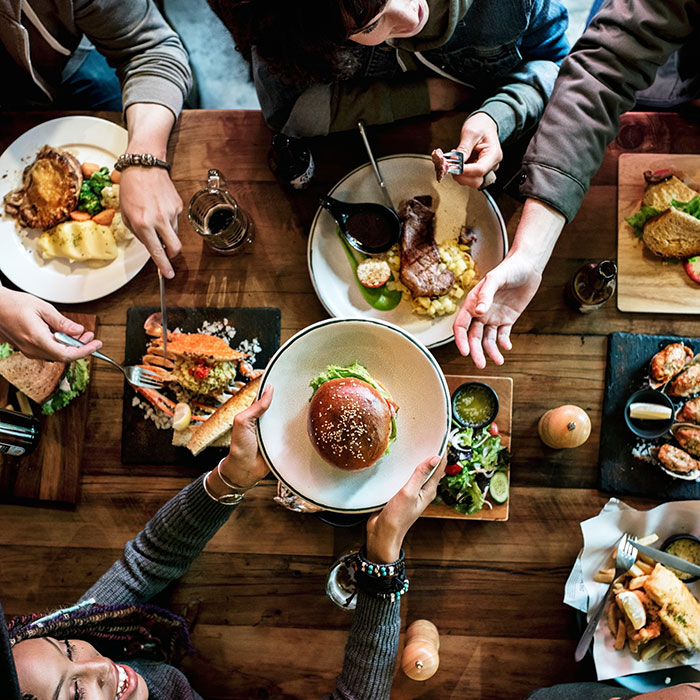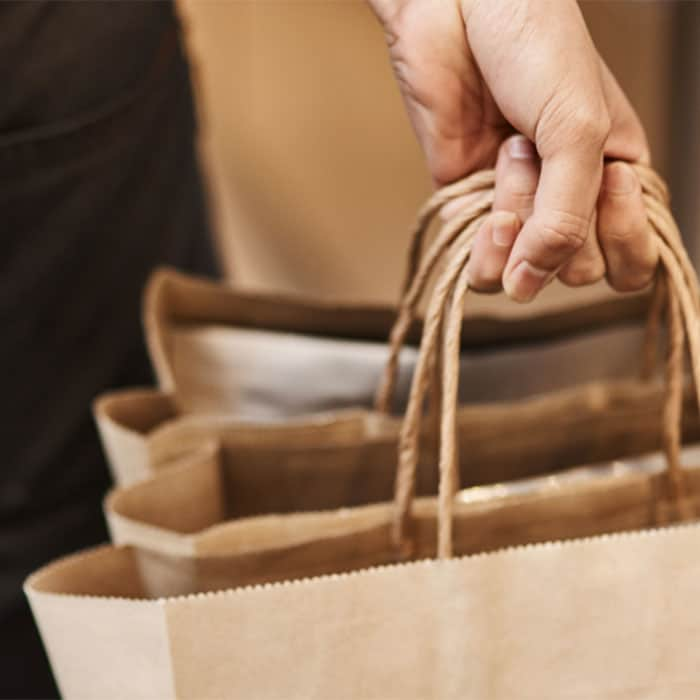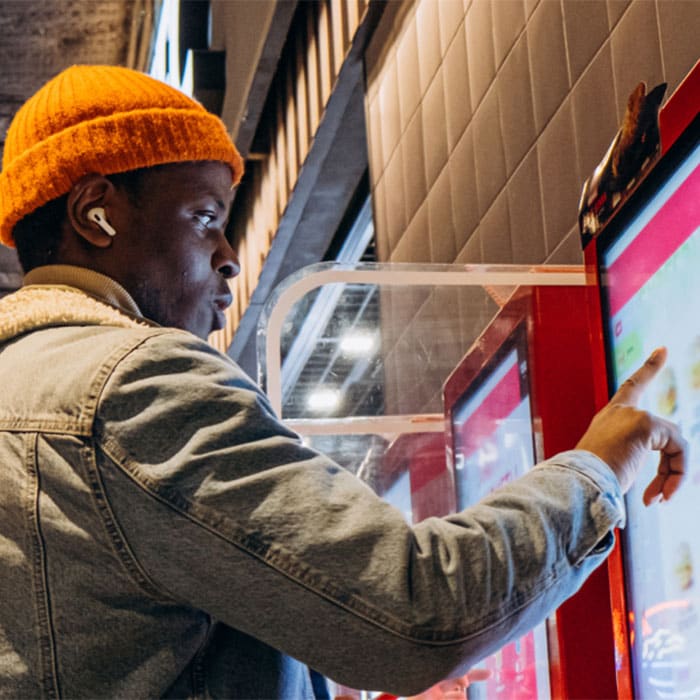The future of restaurants has been saved

Analysis
The future of restaurants
Creating dynamic value in the new normal
The consumer industry is undergoing dramatic change that will likely influence the markets, models, and mechanics of companies in significant ways over the next decade. As challenges emerge and opportunities present themselves, restaurants need to be prepared to innovate and drive the industry forward. So, when change comes, will you be ready?
The appetite for restaurants hasn’t gone away
When we last surveyed restaurant customers for our 2021 restaurant trends report, the COVID-19 pandemic was creating massive uncertainty in the industry, and many worried that restaurant patronage might never recover.
But in our most recent restaurant study, conducted in March 2023, 55% of customers said that the amount of in-person dining they did was actually the same as or higher than before the pandemic. And a surprising 69% reported that they got takeout or delivery at the same rate or more frequently than a few years ago. Clearly, the appetite for restaurants hasn’t gone away.
So, what else does this latest data tell us about restaurants’ new normal? Overall, it seems like many preferences that emerged during the pandemic are here to stay. In the 2021 survey, two themes emerged that now appear to be entrenched. One major trend was ultimate convenience, which was reflected in the dominance of delivery and takeout orders. The importance of a frictionless digital experience also emerged, which remains a key feature for restaurants as consumer preference for digital channels continues to grow.
It's all about value
This year, many consumers are facing a conundrum: they want to keep dining out but are feeling a financial pinch. Restaurants should find ways to provide high-quality food at reasonable prices, which could amplify revenue and guests’ perception of value.
When asked what would get them to order from restaurants more frequently, answers were similar for both dine-in and takeout. Customers want less expensive options alongside promotions and discounts. And given projected future economic concerns, we expect this desire for cost savings to continue to grow.
To keep delivering effective value as customer needs and preferences evolve, restaurants should consider creating a suite of tools that allow for opportunity, such as:
- Personalization engines to provide increasingly targeted discount and marketing campaigns
- Increasingly diversified offerings to meet consumers’ changing and niche needs in this continually expanding market
- More channel-specific offerings to enhance restaurants’ sales mix

The takeover of takeout
Restaurant delivery has surged over the past 10 years—seen in the rise of third-party delivery apps and changes in customer behavior during the pandemic. Restaurants are increasingly catering to this business, which is often leading to smaller dining rooms, dedicated shelves for pickup, and separate service lines to prepare takeout orders.
To encourage digital sales, brands should continue to invest in frictionless digital experiences and consider looking to other industries such as airlines and hotels for inspiration. We found that customers generally prefer to order through a restaurant’s direct channels. So to protect those direct sales, restaurants should work to make their direct order channels the same cost, or less expensive, than third-party options.
To capitalize on the rise of takeout, many restaurants are operating ghost kitchens, which only offer takeout and delivery. In 2023, 50% of customers said they would order from a ghost kitchen, while 24% feel indifferent. While ghost kitchens operate with less labor, changing a restaurant’s physical footprint can be challenging and expensive. As this trend continues, we expect to see greater efficiency in restaurant design.

The rise of automation
Automation and restaurant technology solutions introduced during the pandemic have been largely well-received. This year’s restaurant study found that most guests aren’t deterred by automation and would continue to go to restaurants that use these innovations.
For example, customers are increasingly comfortable with drones and driverless car delivery options, with 47% saying they would order from a restaurant that offered this type of delivery in 2023, versus 44% in 2021. Contactless delivery has also maintained prominence since the pandemic, allowing for faster drop offs.
Technological advances could also lead to a greater focus on labor efficiency. With a tight labor market, increasing minimum wages, and growing union pressures, there will likely be greater scrutiny over which tasks must be completed by workers versus technology.
Looking ahead, we expect to see increasing automation in restaurants. That being said, these are costly investments, especially for large-scale quick service chains. Restaurants have also been challenged by inflation and have had to increase prices to keep up with costs. As they consider where and how to invest in these new technologies, they should weigh the potential returns and be cognizant that any investment may limit their ability keep prices stable.

What’s next for the restaurant industry?
As these changes emerge and opportunities present themselves, restaurants will need to be poised to innovate and drive the industry forward. To learn more about these restaurant industry trends and how you can prepare, download our full report.
Look back at our previous reports on the future of restaurants
Recommendations
Unlocking the value of loyalty programs for restaurants
Serving up new opportunities to build customer loyalty
The future of the consumer industry: Buying into better
Learn more about the trends shaping the future of the consumer industry and how companies can help create a better tomorrow.



